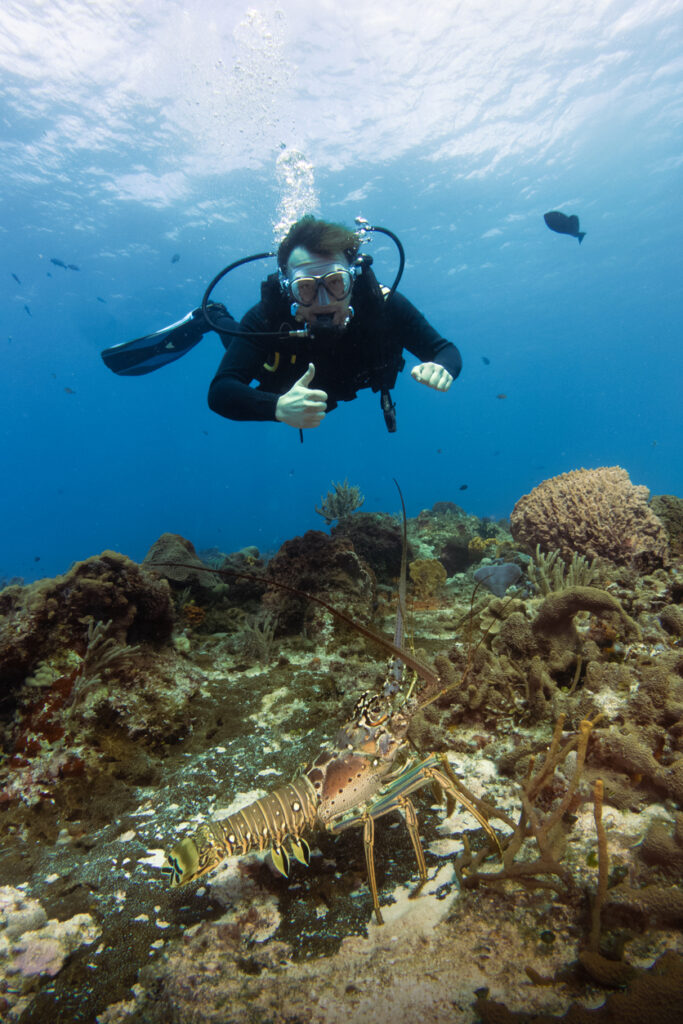
Misha Peleg has been dazzled by the beauty of the undersea world since he was old enough to swim. He is a certified scuba diver and has visited some of the most famous locales around the world, including the Great Barrier Reef in Australia, Cozumel, Belize, and Bonaire.
Being able to view tropical fish, moray eels and jellyfish in their own environments is an unforgettable experience. But scuba safety is something Misha Peleg promotes vocally because there is little margin for error when you are 60 to 100 feet underwater.
Misha knows that diving accidents are largely preventable, and usually occur because someone did not follow the rules or take routine precautions. As a result, Misha has compiled a checklist of scuba safety to-dos to reduce the chance of equipment failure among divers.
1. Scuba tank. A diver’s air tank is their air supply, so it is incredibly important to make sure the tank is safe and in good working condition. Tanks should be visually inspected annually and pass a hydro-static inspection every three to five years. Hydro-static testing is a pressure-based technique used to test the integrity of the tank cylinder.
Just because a tank is shiny and bright does not mean it is safe to use. Misha knows how important it is for divers to have their tanks checked before they head to the bottom of the sea.
2. Regulator inspection. Scuba divers know that their regulator is probably the most important piece of equipment they will use on a dive. A regulator connects the diver to their air tank and allows the diver to breathe compressed air while they are under water. If a diver’s regulator fails, the diver may die if they can’t access an alternate air source or reach the surface.
Having the rubber hoses on a regulator checked for problems like dry rot and other damage could stave off an underwater emergency. Misha knows that damaged hose lines can leak air fast so prevention can mean the difference between life and death.
3. Pressure gauge. Knowing how much air is left in your tank is important when you are 100 feet below the water’s surface. Because divers must ascend slowly to prevent air bubbles from forming in their blood, they must always be aware of their air supply status.
Misha recommends divers have their pressure gauges checked routinely to avoid the possibility of an equipment malfunction and the necessity for a less-than-safe ascension.
4. Wetsuit integrity. Wetsuits are essential for divers because they help a diver stay warm. Wetsuits provide insulation that holds in a diver’s body heat, and keeps the diver from experiencing hypothermia, or low body heat, which can be fatal.
That’s why divers should regularly inspect their wetsuits for rips, tears and dry rot, which can cause the wetsuit fabric to disintegrate.
A wetsuit works by trapping a layer of water between the wetsuit fabric and the diver’s body. The water is subsequently warmed by the diver’s body heat. Wetsuits also offer protection from jellyfish stings and rocky reefs so many divers also wear them in warm water. Misha recommends divers make sure their wetsuits are completely dry before storing them after a dive and checking them thoroughly for deterioration before each dive.
Diving is a unique and fascinating experience, but it can only be enjoyed by rigorously practicing scuba safety. Always remember to check equipment, conditions, and never dive if something isn’t right. Dive safely!
Misha Peleg is a serial entrepreneur and philanthropist. Having founded several highly successful companies since the early 1990s, he uses his business success to support a wide range of non-profit organizations throughout the world. You can follow him on Facebook, Twitter, LinkedIn, and Pinterest.
